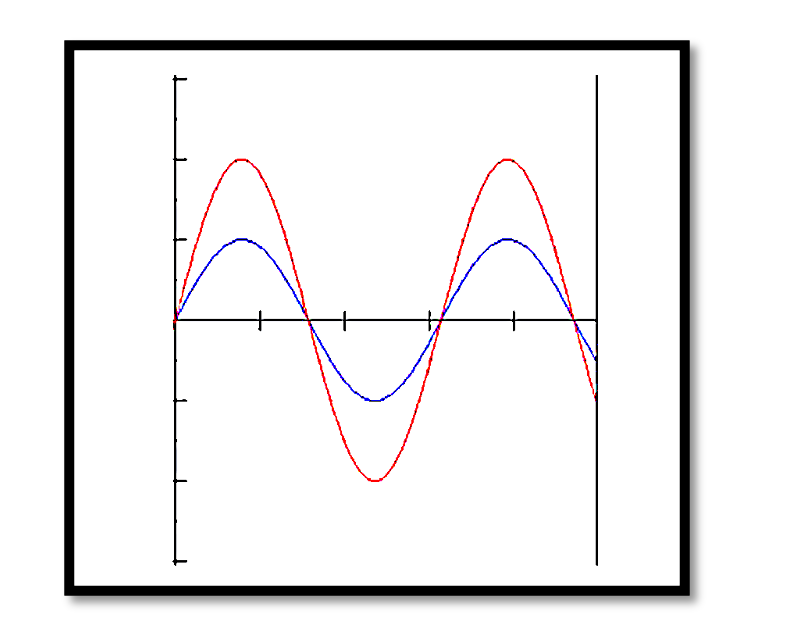
Power Dissipation in AC Circuits
Power dissipation in AC circuits is a fundamental aspect of electrical engineering, affecting the efficiency, safety, and performance of electrical systems. In this blog, we will focus exclusively on the principles of power dissipation, examining the mechanisms through which power is lost in AC circuits, discussing relevant equations, and exploring practical examples.
Introduction to Power Dissipation
Power dissipation refers to the process by which electrical energy is converted into heat energy in resistive components of a circuit. This is an inevitable occurrence in all electrical systems, as no conductor is perfect, and all resistive elements dissipate some amount of power.
Instantaneous Power
The instantaneous power p(t) in an AC circuit is the product of the instantaneous voltage v(t) and current i(t):

This shows that the instantaneous power consists of two components: a constant term and a time-varying term at twice the supply frequency.
Average Power Dissipation
The average power dissipation Pave over one cycle is found by taking the time average of the instantaneous power:

For a purely resistive circuit, the voltage and current are in phase (θV=θI), and the power factor is 1. Thus, the average power dissipated in the resistor simplifies to:

RMS Values
In AC analysis, RMS (Root Mean Square) values for voltage and current are commonly used because they represent the equivalent DC values that deliver the same power:

The average power dissipation can also be expressed using RMS values:

Power Dissipation in Different Components
Resistors
In resistors, power dissipation is straightforward as they obey Ohm’s Law (V=IR). The power dissipated in a resistor RRR is given by:

Resistors convert electrical energy into heat, which is why they can become warm during operation.
Inductors and Capacitors
In ideal inductors and capacitors, the voltage and current are 90 degrees out of phase, meaning cos(θV−θI)=0. Thus, ideally, they do not dissipate power. However, real inductors and capacitors have some resistive components, leading to minimal power dissipation.

Practical Example: Power Dissipation in a Resistor
Consider an AC circuit with a voltage source V(t) and a resistor R. The voltage source generates a sinusoidal voltage v(t), and the current i(t) flows through the resistor. The power dissipated in the resistor is:

Importance of Power Dissipation
Understanding power dissipation is crucial for several reasons:
- Thermal Management: Excessive power dissipation leads to heat generation, which can damage components and reduce the lifespan of electrical devices. Effective thermal management strategies, such as heat sinks and cooling systems, are essential to mitigate these effects.
- Efficiency: Minimizing power dissipation improves the efficiency of electrical systems, reducing energy losses and operational costs. Efficient circuit design and the use of high-quality components can help achieve this goal.
- Safety: Proper management of power dissipation ensures the safe operation of electrical systems, preventing overheating and potential fire hazards. Safety standards and regulations often specify maximum allowable temperatures and dissipation levels for electrical components.
Reducing Power Dissipation
Several strategies can be employed to reduce power dissipation in AC circuits:
- Using Higher Quality Components: Components with lower resistance and better thermal characteristics can reduce power loss.
- Efficient Circuit Design: Optimizing the layout and design of circuits to minimize resistive paths can help reduce dissipation.
- Active Cooling: Implementing cooling systems such as fans, heat sinks, and thermal management materials can help dissipate heat more effectively.
Take our entry level course (Below) for free using coupon code RAHRF101BLOG
RF Fundamentals, Basic Concepts and Components – RAHRF101
For limited time take an additional 10% off of all our courses using coupon code RFCERT10
Rahsoft RF Certificate and courses
Conclusion
Power dissipation in AC circuits is a critical aspect that impacts the efficiency, safety, and performance of electrical systems. By understanding the mechanisms and equations governing power dissipation, engineers can design systems that effectively manage heat and energy loss, ensuring reliable and efficient operation. The principles discussed here form the basis for advanced topics in thermal management, circuit design, and energy efficiency.

Learn more about this topic by taking the complete course ‘Linear RF Power Amplifier (PA) Design Theory and Principles online course – RAHRF562’. Watch the course videos for more detailed understanding. Also checkout other courses on RF system and IC design on https://rahsoft.com/courses/. Rahsoft also provides a certificate on Radio Frequency. All the courses offer step by step approach.



